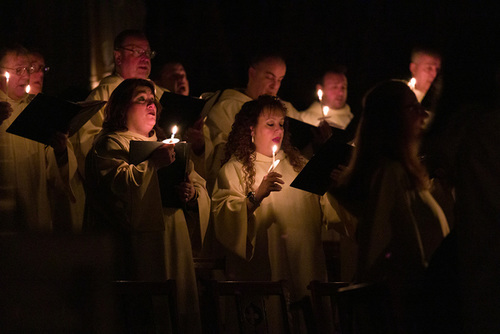Groundhog Day is rooted in Candlemas when priests would bless candles needed for winter
On Feb. 2, Punxsutawney Phil saw his shadow during the annual event in which the groundhog predicts whether we will have an early or late spring. The folklore of rodents, shadows, and weather predictions is actually rooted in the Christian tradition of Candlemas Day in Europe and the Feast of the Presentation of the Lord — both on Feb. 2.
Catholics and many religions used Candlemas as the day to predict the start of spring using an animal. In the early years, the animal was typically a badger but in Germany, they used a bear or the fox. Early Catholic tradition was the use of a hedgehog. Just as Phil did on Thursday if the animal saw its shadow, it meant a longer winter.
On Thursday, Feb. 2, The Benedictine Sisters of Elizabeth hosted “A Deeper Dive Into Groundhog Day,” a morning “mini-retreat” at St. Walburga Monastery in Elizabeth, N.J.

Benedictine Spirituality Center Director, Sister Marlene Milasus, OSB, designed the program to explore the ancient spiritual and cosmic significance of Groundhog Day and how the rituals and customs associated with the day can point people toward their inner longings for light, life, and love.
Candlemas falls on the Feast of the Presentation of the Lord, which is 40 days after the birth of Christ. As required by Jewish Law on day 40, Mary and Joseph brought Jesus to the temple in Jerusalem to be consecrated to the Lord, as is written in Luke 2:22.
“On the Liturgical Calendar, Feb. 2 marks the Feast of the Presentation of the Lord. This Feast is also known as Candlemas Day; the day on which candles are blessed symbolizing Christ who is the light of the world, and the day the Church celebrates World Day for Consecrated life, a reminder that God calls men and women to Religious vocations to reflect the light of Christ to all people,” according to Sister Milasus.
The feast is also known as the Purification of the Blessed Virgin Mary because on that day the mother would be purified as well.
It was also another epiphany.
The chapter in Luke continues that the prophet Simeon, while visiting the temple, takes Christ in his arms and acknowledges him as the Savior. It had been revealed to him by the Holy Spirit that he should not see death before he had seen the Messiah of the Lord: “Now, Master, you may let your servant go in peace, according to your word for my eyes have seen your salvation, which you prepared in sight of all the peoples, light for revelation to the Gentiles, and glory for your people Israel.”
Because of Simeon’s witness to Christ as the “light to the Gentiles,” the feast is also known as Candlemas.
It was in the 8th century when Pope Sergius decided to add a candlelight procession to the Mass. The tradition of blessing and distribution of candles became part of the celebration, giving the feast its name of Candlemas.
During the mini-retreat, Sister Milasus offered deeper insights into the timing and tradition of Groundhog Day and its association with early agrarian culture and in particular the Quarter Days and Cross-Quarter Days as noted on ancient Celtic calendars. Groundhog Day, a Cross-Quarter Day, is midpoint between the winter solstice and the spring equinox. Within this context, and with the understanding of the deeply-rooted human desire to seek the light, Sister Milasus moved the group toward a greater understanding of and appreciation for the significance of this date in the Catholic tradition.
The Benedictine Sisters of Elizabeth began offering retreats in the mid-1980s. Currently, the Center offers weekend retreats for women as well as Saturday programs, mini-retreats and virtual retreats for men and women. To learn more, visit www.bensisnj.org/retreats.


